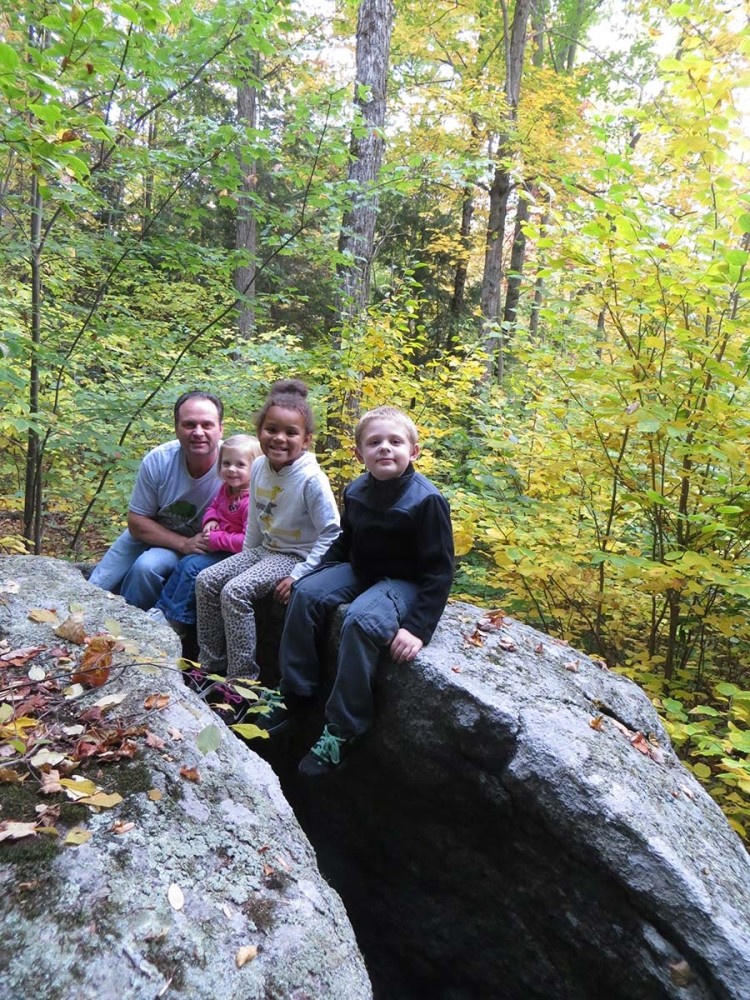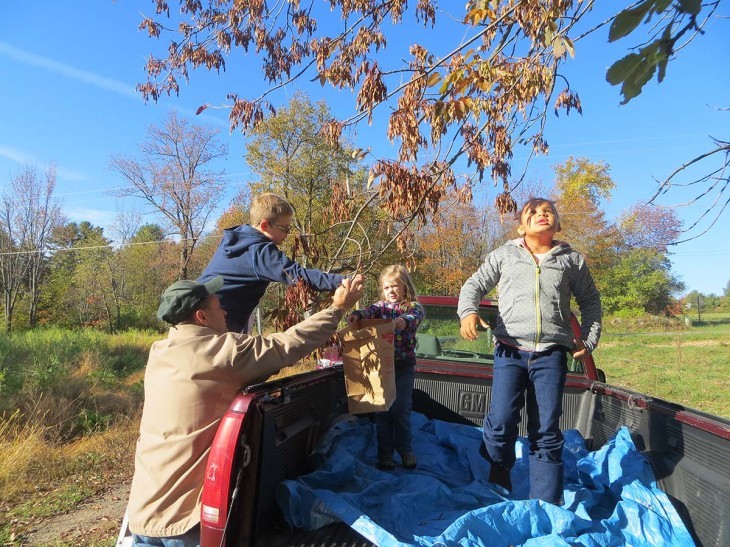
When the Edwards family closed its four-generation dairy farm in 2001, Kurt and Kristie Edwards turned their attention to the mostly forested property, a few miles away, which has been in Kurt’s family since 1887. That was the year his great-great-grandfather, Conrad Zimmerman, purchased some 400 acres in Mayfield, in the southern Adirondacks. Kurt and Kristie now own and manage 193 of those acres, and they live in a log house built from hemlocks harvested on site. They’ve been learning about forest management as they go over the last two decades.
“The biggest influence was when we joined NYFOA (New York Forest Owners Association). They’re just a great resource,” said Kurt. “I really enjoy the forestry stuff. I’ll take the saw and go out and cut for a couple of hours during the day and walk around the woods to see what else I should do. I may look into one of NYFOA’s programs on timber stand improvement, because there are some things I think should be addressed for the management of the property, for better timber. I always think I can do a better job.”
The property includes 183 acres of forestland, ranging from stands of red oak to patches of pine and hemlock in the swampy areas. There’s also lots of beech – so much that it hinders the growth of other tree species. Working to reduce beech is one of the management goals, along with addressing deer over-browsing and improving habitat for birds and other wildlife.
The property is enrolled in the 480A program, New York’s Forest Tax Law Program, which requires landowners to maintain and follow a management plan developed by a certified forester – and in return lowers taxes by exempting a percentage of the assessed property value. Kurt and Kristie are active members of NYFOA and are Master Forest Owner volunteers through Cornell Cooperative Extension, which means they assist other woodland owners getting started with managing their own properties.
“Our involvement in the MFO program and NYFOA have been so beneficial to us in so many ways,” Kristie said. “The programs offered to the individual forest owner are vast and very informative. The education we have gained by being part of the programs has supported the management of our property immensely.”
Kurt has been focused on eradicating beech on a 10-acre plot, with cost assistance from the U.S. Department of Agriculture’s Environmental Quality Incentives Program (EQIP). “You have patches where it’s just solid beech and nothing else can get growing there,” he said. He’s also enrolled in the USDA’s Conservation Stewardship Program, focusing on improving wildlife habitat. This involves creating snags of various sizes in forested areas, building brush piles for shelter and habitat, and fostering more diversity in tree ages and size.
“We had a seed tree regeneration cut about 10 years ago, and we left some nice seed trees in it, so it’s growing up into saplings now,” said Kurt. “That has helped some with the wildlife and birds. We were hoping the whip-poor-wills would come back, but they haven’t. And we used to have a lot of ruffed grouse, but five years ago we didn’t see any. The past two years, I’ve seen a couple.”
Kurt hopes that maintaining a diversity of forest types – from older stands to early succession and mid succession – will continue to enhance habitat. Wildlife on the property includes various hawk and owl species, fishers, red and gray fox, bears, and bobcats.
There are also many deer – enough of them that they can wreak havoc on management efforts, eating “everything in sight” and hindering tree regeneration. “Hunting is a family tradition,” said Kurt, and it can have at least some impact on deer numbers. The Edwards family includes several hunters: Kurt, his brother, cousins, and his teenage grandson. Through the state’s Deer Management Assistance Program, Kurt acquires two additional antlerless permits each year.
He hopes forest stewardship will remain a family tradition as well. One son and his family also live on the property, and Kristie said she and Kurt enjoy exploring the woods and streams with their grandchildren, either hiking or riding ATVs and snowmobiles. Kurt processes about 10 cords of firewood each year to fuel the wood furnace, which is their home’s primary source of heat. The couple also experiments with planting a variety of tree species.
“We want our forest to be sustainable for the future, to grow high-quality trees, and to diversify the tree species against current and future threats,” said Kristie. “By that I mean we try to plant many different species, so when a threat like hemlock woolly adelgid, emerald ash borer, or oak wilt strikes, there will be other species left.”
Kurt said he’s planted everything from bald cypress trees in swampy areas to a few chestnuts. He hopes someday to be able to plant chestnut trees that are resistant to blight.
“All this is for the kids and grandkids,” he said. “I’ll see some of those trees grow up, but I’ve only got another 40 years. That’ll make me 101.”


